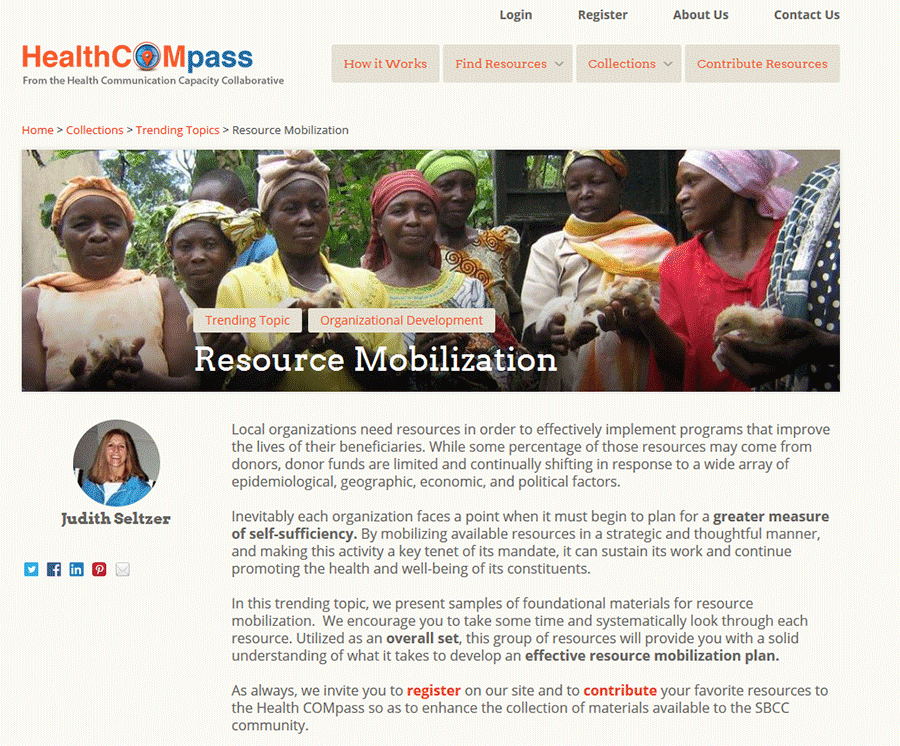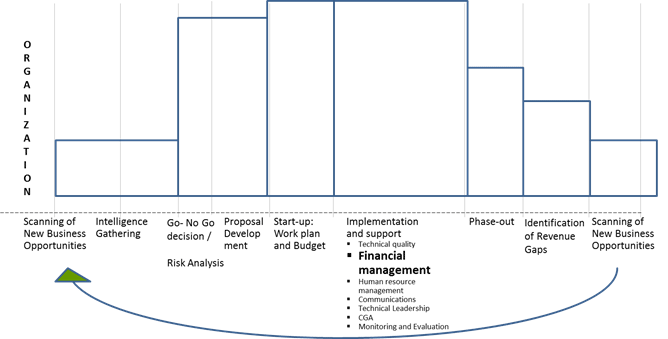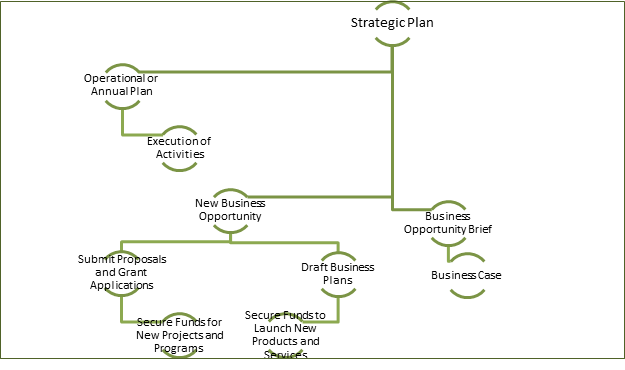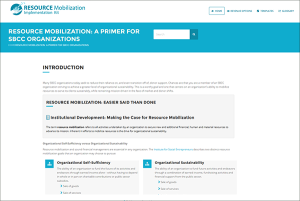What is Resource Mobilization and Why is it so Important?
The term “resource mobilization” is used routinely these days, but what does it really mean, and how does it relate to an organization’s sustainability?
What is resource mobilization?
Resource mobilization refers to all activities involved in securing new and additional resources for your organization. It also involves making better use of, and maximizing, existing resources. Resource mobilization is often referred to as ‘New Business Development’. The figure below shows how New Business Opportunities – which are intended to mobilize resources – form part of an organization’s overall functioning.
Why is resource mobilization so important?
Resource mobilization is critical to any organization for the following reasons:
- Ensures the continuation of your organization’s service provision to clients
- Supports organizational sustainability
- Allows for improvement and scale-up of products and services the organization currently provides
- Organizations, both in the public and private sector, must be in the business of generating new business to stay in business
What is meant by sustainability?
Although sustainability is often identified with having sufficient funds to cover an organization’s activities, it is actually a broader concept. There are three fundamental streams of sustainability: institutional, financial and programmatic. Each is vital to the survival of an organization. Below are the definitions of these three areas of sustainability:
Programmatic sustainability. The organization delivers products and services that respond to clients’ needs and anticipates new areas of need. Its success enables expansion of its client base.
Institutional sustainability. The organization has a strong, yet flexible structure and accountable, transparent governance practices. Its structure and good governance allows it to respond to the shifting priorities of its supporters and to new responsibilities toward its clients, while creating a positive work climate for its staff.
Financial sustainability. The organization draws on various sources of revenue, allowing it to support its ongoing efforts and to undertake new initiatives.
Figure 2 below shows how all of these streams of sustainability are exercised in an organization. The strategic plan is the anchor, in which an organization’s programs, structure and systems, as well as financials are reviewed and new business opportunities are identified. These new directions or new business opportunities are then pursued using a distinct resource mobilization strategy, such as writing proposals, submitting grant applications, or drafting business cases or business plans. All of these instruments are designed to showcase an organization’s programs, institutional structure, and financial health.
In signing off, I would like to share with you 10 truths about resource mobilization:
- Organizations are not entitled to support; they must earn it.
- Successful resource mobilization requires a lot of work and takes a lot of time.
- If your organization needs additional revenue one year from now, start today!
- Be ready, willing and able to sell your organization and the programs for which you are raising money.
- Resource mobilization efforts should align with your organizational mission, objectives and strategic plan.
- Resource mobilization is also about the needs of the (prospective) funder.
- Understand the needs of your clients (target population/funders).
- Be prepared to provide evidence-based results.
- Your organizational performance today impacts your ability to generate resources tomorrow.
- You must establish and maintain organizational credibility and reputation.
We invite you to explore the goal of resource mobilization in the new focus package available on the Health COMpass and learn about important distinctions and tools that can help shape your organization’s approach to mobilizing resources.











Leave a Reply
Want to join the discussion?Feel free to contribute!